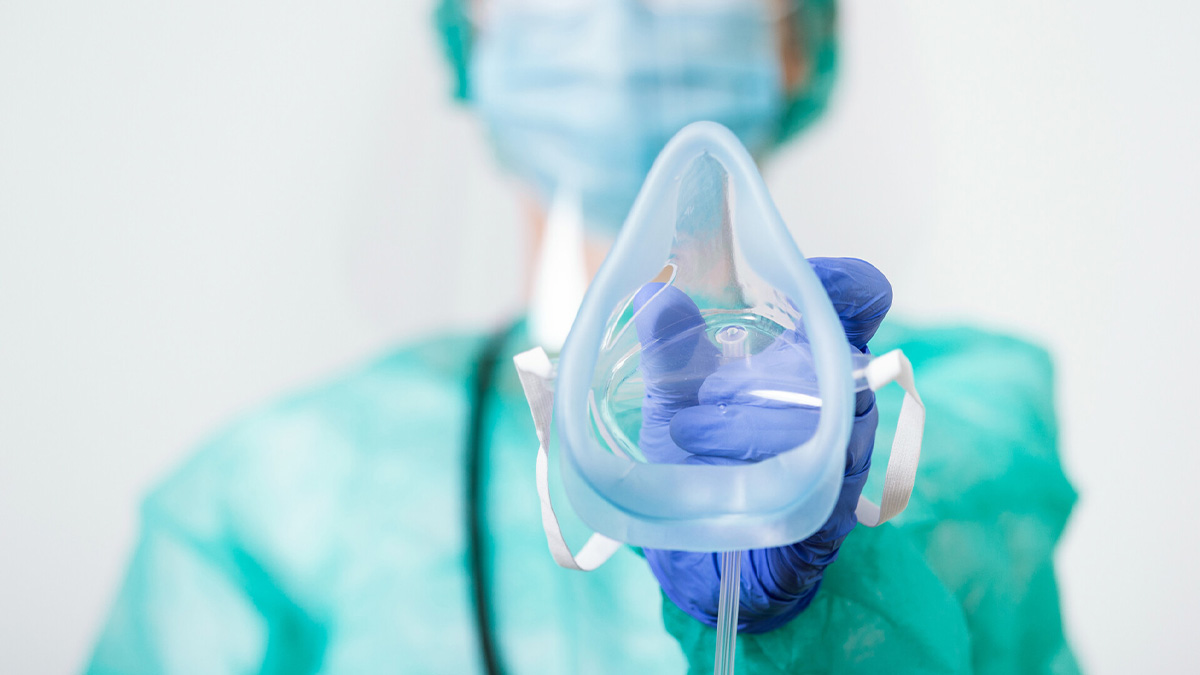For many people working in hazardous environments and confined spaces, the correct respiratory protective equipment (RPE) is critical to maintaining health and safety and protecting lives. Respiratory protective equipment provides indispensable protection.
What is Respiratory Protective Equipment?
Respiratory protection is used to protect the respiratory system from harmful substances such as dust, fumes, and gases. Respiratory protection can include different types of respiratory protective equipment or respirators.
Global Respiratory Protective Equipment Market:
The global respiratory protective equipment (RPE) market reached $2.7 billion in sales in 2021 and is expected to reach $4.0 billion in 2028 at a CAGR of 6.1%.
The healthcare industry has been in an extremely challenging situation for the past two years. National Health Service (NHS) industries have faced a shortage of personnel while responding to the epidemic. The demand for NHS-related products by patients and medical staff is increasing, and the medical and health industry needs to strive to maintain high-quality services. The need to minimize the spread of COVID-19 in crowded hospitals has increased the need for critical personal protective equipment (PPE), especially respiratory protective equipment (RPE).
Medical Respiratory Protective Equipment Market Development:
The initial outbreak of COVID-19, and the subsequent variant virus Omicron, have caused the industry and the public to ponder, and the continued risk of further outbreaks still exists. RPE is the most important piece of equipment for healthcare workers in the fight against COVID-19. The healthcare industry must address three key issues regarding RPE: safety, cost, and environmental impact.
- Safety:
The top priority of all healthcare facilities is the safety of patients and staff. In the case of COVID-19, the highly contagious airborne virus creates high-risk environments for healthcare workers. While disposable face shields have played a role in protecting healthcare workers in these settings, there are still other safety risks. Various medical associations have called for and promoted the development of a higher-level RPE industry, hoping to ensure the safety of relevant personnel. For RPE in the riskiest environments, the Health and Safety Executive (HSE) currently recommends the use of a tight-fitting filtering facepiece, FFP3-rated respirator, which works by creating a tight seal between the user's face and mask to avoid transmission of airborne viruses.
- Financial Burden:
The NHS has devoted significant financial resources to one-off PPE and RPE. However, because FFP3-rated respirators are more expensive than disposable masks, making these respirators more widely available to healthcare workers will cause costs to rise significantly again. The NHS continues to need to buy more and more single-use masks to meet demand. However, if these respirators are reusable, the short-term cost increase is quickly offset over time, and there is no need to replace masks. Also, the longer these items can be reused, the more the NHS can start to save on replacing the RPE.
- Sustainability:
The sustainable healthcare industry has long been on the agenda. However, recent research found that in the first six months after the COVID-19 outbreak alone, the carbon footprint, CO2 equivalent of PPE totaled more than 100,000 tonnes. The biggest contributions to this come from gloves, aprons, face shields, IIR-style surgical masks, and FFP3 respirators. Given the continued disposal of contaminated PPE, sustainable approaches should be a priority. One-off PPE imposes significant financial costs on the NHS, but it also presents significant environmental challenges. Disposable masks contain large amounts of single-use non-recyclable plastic materials, all of which must be disposed of as infectious waste that requires incineration. The ability to reuse PPE will greatly contribute to the healthcare industry's environmental impact. Any solution that provides reusable equipment needs to guarantee the traceability of disinfection and processes, and it must be able to remove any doubts about the ability to thoroughly disinfect items.
Respiratory Protective Equipment for Industrial Use:
In addition to medical respiratory protective equipment, some industrial manufacturing environments are high-air pollution and high-risk environments. In many industrial facilities, there may be hazardous substances in the work area of employees, or the amount of oxygen and toxic substances may change at any time. These health hazards can affect the lungs or cause illness and, in extreme cases, death. Respiratory protective equipment must be used where toxic substances cannot be fully controlled. Therefore, many forms of industrial respiratory protective equipment have been developed.
There are several types of respirators available for different work environments. For example, there are filtering facepiece respirators made of plastic or rubber that filter the air before it enters the lungs. Gas masks use filters to remove toxins from the air. And self-contained ones that provide clean air through hoses and mask-type breathing apparatuses (SCBA).
What Types of Industrial Respiratory Protective Equipment are there?
-
Respiratory protective mask: Dust face shields (filtering facepieces, of FFPs) include lightweight respiratory protective equipment such as half and full-face masks, and they provide reliable protection against almost all types of gases, vapors, dust, and particles.
-
Breathing filter: Half and full-face masks that must be used with breathing filters to protect the airways from harmful substances. These contain a variety of particulate, gas, and combined filters.
-
Power-purifying respiratory protection (PAPR): Power-purifying respirators are battery-powered and draw ambient air through a filter canister into the headgear with virtually no breathing resistance. These respirators can be worn longer, allowing users to breathe freely during difficult tasks.
-
Self-contained breathing apparatus: Isolation equipment that provides reliable respiratory protection in workplaces where hazardous substances or low oxygen levels may be present. Lightweight compressed air respirators are suitable for short-term use and can even be used as rescue devices in emergencies.
-
Long-pipe air supply and compressed air systems: Long-tube air supply and compressed air systems are breathing equipment that cannot be carried freely. A pressurized air system connected by a hose provides breathing air to the wearer. The long-tube air supply has almost no breathing resistance and is suitable for long-term use.








.jpg)
.jpg)
.jpg)

.jpg)

點-m-90454917_m.jpg)